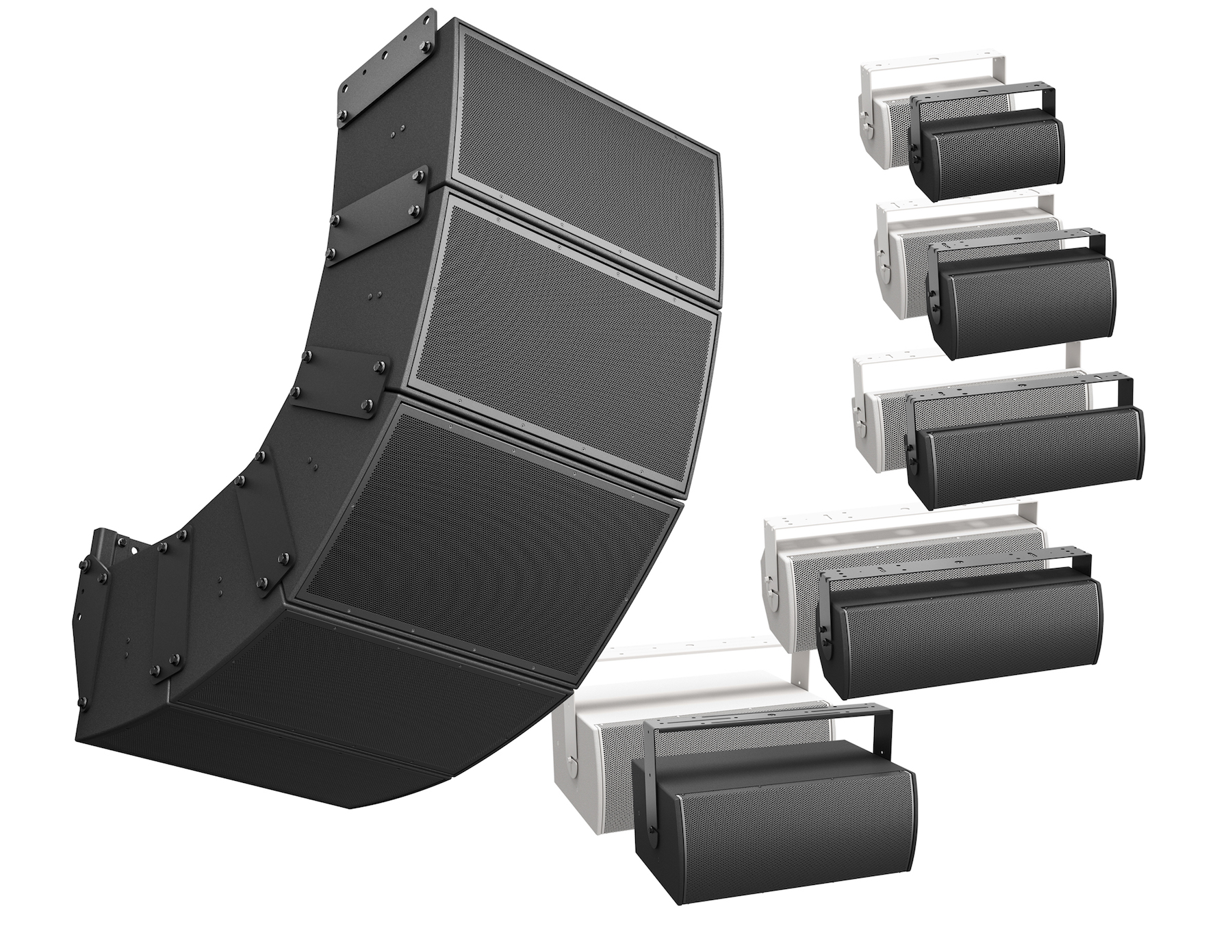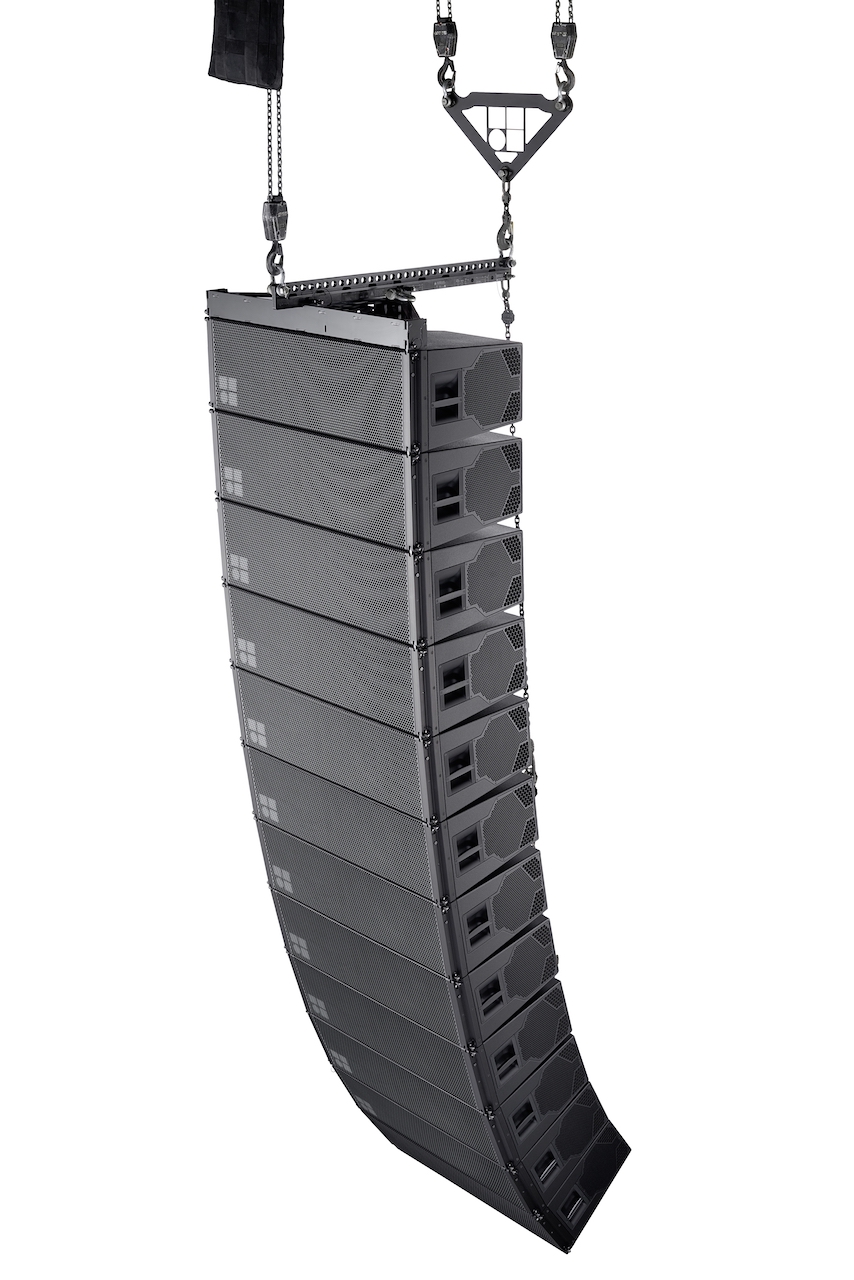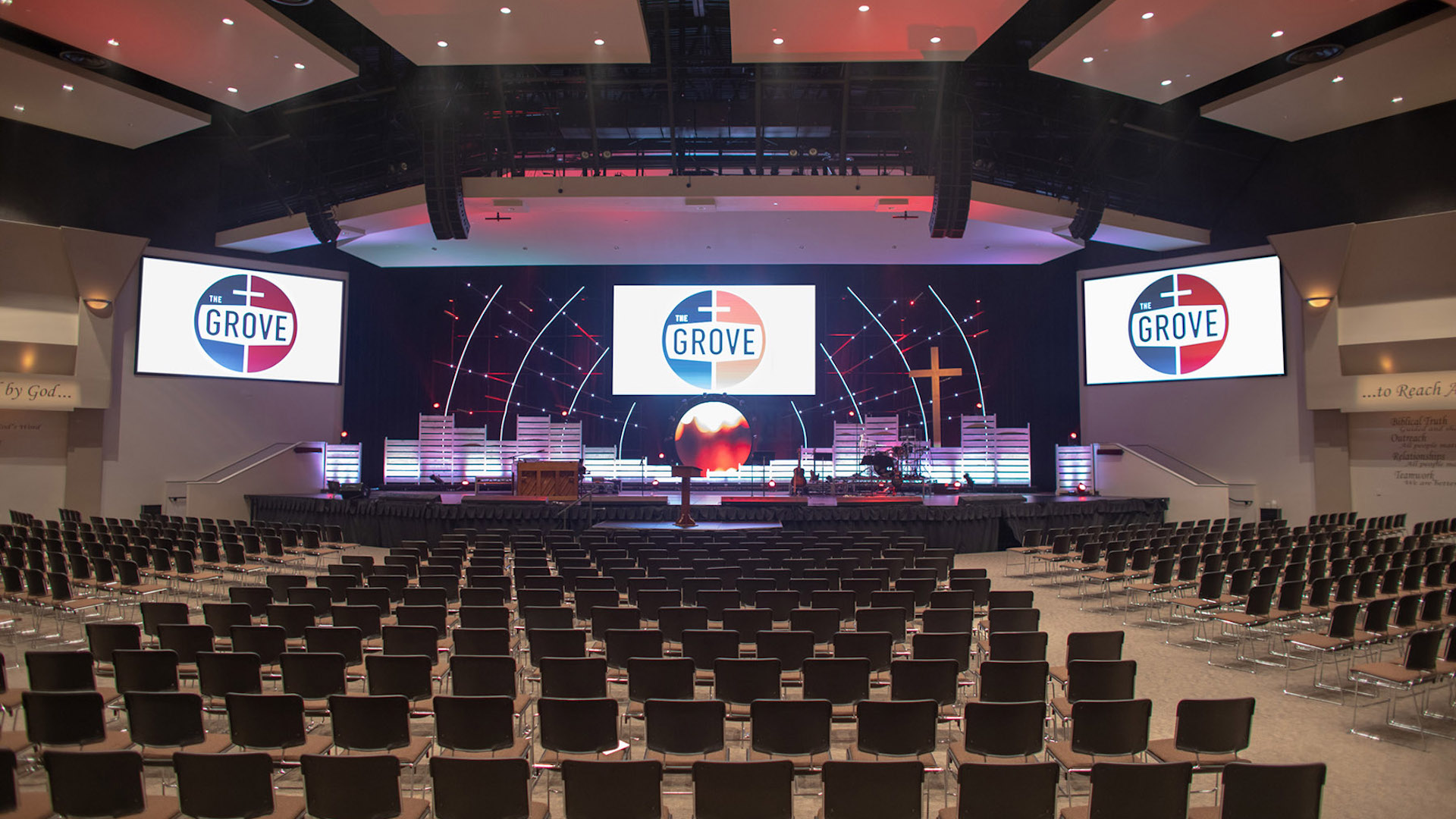Achieving audience engagement is top of mind for anyone tasked with staging a production, whether it’s a corporate event, a theatrical performance, a concert, or a worship service. Audio, of course, plays a significant role in keeping people interested; when people can’t hear what’s taking place on stage, they get frustrated, and eventually they zone out. Preventing this grows more complicated in larger spaces where there is more seating, and therefore, more people to reach. Audio technology developers continue to invest significant time and money in designing solutions that are capable of delivering high-quality reinforcement to every seat in the house.
“[During the last] 25-plus years, most large venues have [had] a left and right PA, and maybe front fills,” said Tim Corder, director of strategic accounts, house of worship at Diversified, a global technology solutions provider headquartered in Kenilworth, NJ. The problem with this, he argued, is that the majority of the audience hears only one of those two arrays and the solution has been to pan the mix straight up the middle of the room. “Essentially, it’s a dual-mono PA.”
Corder believes that multi-channel sound design—which involves multiple hangs of speaker arrays across the front of a space in the interest of creating a wider sound stage or more coverage—is the next frontier in audio for large venues. “I think potentially the most transformative revolution in live sound is the shift from trying to create an incrementally better PA that has an extra 10Hz of bandwidth, more headroom, or whatever the case may be, to: how do we create a more engaging experience for our audiences?” he said. “A lot of speaker manufacturers are suggesting that the adaptation of more multi-channel live sound design is the next big thing.”
Serving Distributed Audiences
Establishing and maintaining audience engagement becomes even more complex when producers must consider not only a live audience, but those watching and listening to a broadcast. Last spring, the TED Conference—which features high-profile presenters from all walks of life sharing new perspectives and ideas on a wide range of topics—signed a multi-year contract with Meyer Sound, a loudspeaker manufacturer headquartered in Berkeley, CA, in part to address this issue. This new relationship officially began with TED2019, which was held at the Vancouver Convention Centre in British Columbia, Canada.
The auditorium where the bulk of the presentations took place is a 1,200-seat wrap-around theater. The audio quality had to be crystal-clear and consistent, both for the live audience as well as the simulcast and recording. “The last thing I want to do is call the front-of-house mixer and say, ‘You’re in my way, turn it down,” said Michael Noonan, TED audio lead and director of broadcast audio, “so we have to find ways to deliver a compelling audio experience to the live audience, to make it as rich and transparent as possible for them, yet still make it seem like there was no PA in the room for the broadcast sound. And that’s critical for the speakers, because so much of their personality, so much impact of what they are saying is wrapped up in the tonality and dynamics of their voice.”

For TED2019, the system featured 32 Meyer Sound LEOPARD line array loudspeakers with three 1100-LFC low-frequency control components to boost deep bass. Forty-four MM-4XP miniature self-powered loudspeakers served as front fills and foot fills. TED Under the Stars, the conference’s standout simulcast venue, was designed as an immersive experience featuring birds, crickets, a babbling brook, and a crackling campfire, all assembled with a D-Mitri digital audio platform that used 24 playback channels of Wild Tracks. The venue incorporated lighting, projections, set pieces, and an immersive audio system comprised of 16 Meyer UP-4slim loudspeakers, each pole-mounted on an MM-10ACX subwoofer.
Planning for Flexibility
During a recent audio system upgrade at The Grove Community Church in Riverside, CA, the goal was to better accommodate the house of worship’s shift to contemporary praise. CCI Solutions, based in Olympia, WA, designed and integrated a new system comprised of 11 L-Acoustics Kara(i) loudspeakers. Eight SB18i subwoofers are flown in a central horizontal array between them. To provide coverage to the seating on the far left and far right of the room, CCI installed twin arrays of six Kiva II loudspeakers. KS28 subwoofers are ground-stacked, two per side, under the stage thrust, and several X8 and X12 enclosures provide fill. Six LA8 amplified controllers power the Kara/Kiva II and SB18i units, an LA4X powers the fills, and an LA12X drives the KS28s.
Mark Pearson, project lead at CCI Solutions, noted that the subwoofer design, which incorporates two different models, is capable of supporting varied programming. “The flown SB18s are being run with the full range of the system as an LF extension to the Kara/Kiva II, and then the KS28s are switchable between being run with the system and run from an aux off the console,” he said. “The method in which we designed the sub system is to create a more efficient use of the subs to complement The Grove’s contemporary worship style. It comes down to flexibility. The church doesn’t necessarily need a lot of punch for weekends, but they want the ability to have it whenever they want.”
Thinking Forward
For tech managers overseeing large-venue sound reinforcement installations, Corder advises thoughtful planning up front. “It’s important to have very clear expectations, and to manage those expectations between the manufacturer, the integrator, and the client so that we best maximize the client’s budget and so that we are also best able to harness these tools to solve the client’s problem,” he said. Adopting the latest and greatest just because it’s possible will probably not produce the desired outcome, he said. “Cool for cool’s sake, oftentimes, does not represent the best investment. Because of that, it’s even more important for us to be very clear on the ‘why’ and the ‘what we’re trying to solve’ before we start trying to answer the ‘how’ question.”

Sounding Out
Bose Professional recently introduced its line of ArenaMatch DeltaQ and ArenaMatch Utility loudspeakers, designed for large outdoor deployments. Bose’s DeltaQ technology enables directivity—or “Q”— to vary in each speaker module, resulting in more precise coverage, according to the manufacturer. Modules come with 10-, 20-, or 40-degree vertical coverage and field-swappable horizontal waveguides (either 60, 80, or 100 degrees), providing nine different coverage patterns. The result: the ability to produce asymmetrical coverage patterns, reduced module counts (which translates into improved sightlines), and fewer speaker modules.
Sounding Even
Released last year, d&b audiotechnik’s GSL12 and GSL8 line array loudspeakers were designed for large audio applications. Delivering a 120-degree constant directivity dispersion pattern in the horizontal plane, up to 24 GSL12s can be flown in vertical columns. In the GSL8 are two 14-inch neodymium forward-facing LF drivers and two side-firing 10-inch neodymium LF drivers. Two channels drive the loudspeakers—one powers the 14-inch drivers while the other powers all of the other passively crossed-over components, resulting in consistent and accurate horizontal dispersion.
Carolyn Heinze is a freelance writer/editor.
